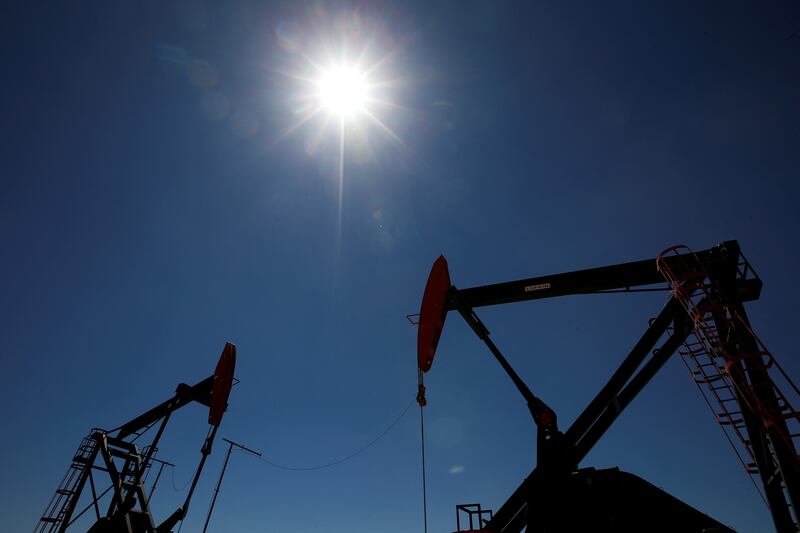Oil prices ended lower on Friday and posted a second week of losses on demand concerns and a report that the US and Iran were close to reaching an interim nuclear deal.
Brent, the benchmark for two thirds of the world’s oil, slid 1.54 per cent, or $1.17, to settle at $74.79 a barrel. West Texas Intermediate, the gauge that tracks US crude, closed down 1.57 per cent, or $1.12, to $70.17 a barrel.
“It's been a very choppy week in oil markets, with traders forced to digest the latest compromise deal from Opec+ against the backdrop of more interest rate hikes and dampening prospects for the global economy,” said Craig Erlam, a senior market analyst at Oanda.
“Resilience in the economy now is impressive but the longer it lasts, the more it will be met with higher interest rates that could ultimately deliver a harder landing.”
Brent fell as much as 4.2 per cent on Thursday after a news report said that the US and Iran were close to signing a temporary deal that would offer some sanctions relief in exchange for a reduction in Iran’s uranium enrichment.
However, Washington and Tehran have denied the report about a potential agreement.
“This report is false and misleading”, a representative of the White House National Security Council was quoted as saying by Reuters. "Any reports of an interim deal are false."
Oil exports, Iran’s primary revenue source, have slumped after the US reimposed sanctions on the country three years ago following Washington's withdrawal from Tehran’s 2015 nuclear deal.
The report comes days after Saudi Arabia, the world’s largest oil exporter, announced a unilateral output cut of a million barrels per day for July.
The Opec+ alliance of 23 oil-producing counties also pledged to extend its current production cuts until the end of 2024 as economic growth concerns weigh on the fuel demand outlook.
The group has total production curbs of 3.66 million bpd, or about 3.7 per cent of global demand, in place, including a 2 million bpd reduction agreed on last year and voluntary cuts of 1.66 million bpd announced in April.
Oil prices gained on the announcements but pulled back during the week on a build-up in US fuel stocks and signs of weak economic growth in China, the world’s second-largest economy and top crude importer.
“Persistent anxiety over a pending collapse in demand seems to be weighing on the market, with eyes looking to developments in Chinese monetary policy or real estate support mechanisms more than oil production cuts from Opec+,” Emirates NBD analysts said in a research note.
The International Energy Agency has predicted that global crude demand will hit record levels this year on the back of an economic recovery in China.
However, economic growth in the Asian country has been largely uneven since it lifted Covid-19 restrictions earlier this year.
China’s exports slumped 7.5 per cent annually in May, its biggest fall since January, data from the Customs Bureau showed on Wednesday.
A Reuters poll had estimated a decline of 0.4 per cent.
Meanwhile, US crude stocks fell by 500,000 barrels in the week that ended on June 2, according to the US Energy Information Administration.
However, a rise of 2.7 million barrels in petroleum stocks and 5.1 million barrels in distillate fuel inventories raised concerns about fuel demand in the world’s largest oil-consuming nation.
In its Short-Term Energy Outlook, the EIA forecast that global oil stocks would decrease every quarter from the last three months of this year to the corresponding period in 2024.
The statistical arm of the US Department of Energy now expects crude stocks to fall “slightly” in 2024, compared with a previous forecast of a growth of 300,000 bpd.
“Significant uncertainty remains around global economic growth and the potential impact on oil demand over the forecast period,” the EIA said.






